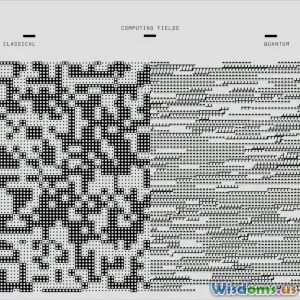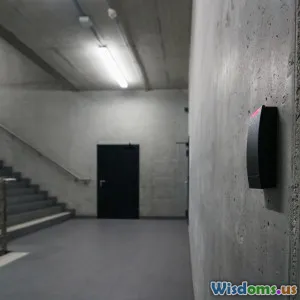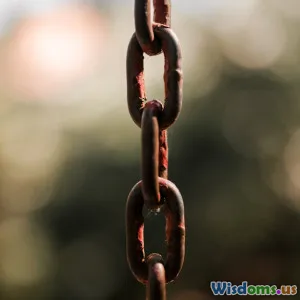
Is Quantum Computing About to Make Cryptography Obsolete
8 min read Explore how quantum computing challenges current cryptography and the future of secure communication. (0 Reviews)
Is Quantum Computing About to Make Cryptography Obsolete?
In the evolving landscape of technology, quantum computing stands out as both a beacon of revolutionary potential and a looming threat to established digital security systems. Imagine a computer capable of solving problems in seconds that would take classical machines millions of years — this is the promise of quantum computing. However, alongside this immense power comes an uneasy question: could quantum computers render the cryptographic algorithms securing today's internet obsolete?
Understanding Cryptography: The Backbone of Digital Security
To grasp the stakes, one must first understand what cryptography does. Cryptography is the mathematical art and science of keeping digital communication safe from unauthorized access. It underpins everything from online banking and private messaging to electronic voting and government secrets. Most cryptography today relies on complex mathematical problems considered infeasible to solve with classical computers — such as factoring large numbers or computing discrete logarithms — forming the basis for RSA and elliptic curve cryptography.
Why Current Cryptography Is Vulnerable
These mathematical problems are often referred to as ‘one-way functions’ — easy to perform but hard to reverse without a special key. For instance, RSA encryption depends on the difficulty of factoring a large product of two prime numbers, a task considered practically impossible for classical computers at the scales used in secure communications (2048-bit keys and beyond).
However, this assumption hinged upon the limitations of classical computational power. Enter quantum computing.
What Is Quantum Computing?
Quantum computers leverage the principles of quantum mechanics: superposition (a quantum bit, or qubit, can represent both 0 and 1 simultaneously) and entanglement (correlations between qubits that enable complex joint states). These phenomena allow quantum computers to perform specific calculations vastly more efficiently than classical counterparts.
One notable quantum algorithm particularly relevant here is Shor's algorithm, developed by mathematician Peter Shor in 1994. It theoretically enables quantum computers to factor large integers exponentially faster than the best-known classical algorithms.
Shor’s Algorithm: The Kryptonite for Current Cryptography
If a sufficiently powerful quantum computer were built, it could run Shor's algorithm to break RSA and elliptic curve cryptography within practical timeframes, effectively undermining the security that underlies modern communications:
- It would expose sensitive information protected by these cryptosystems.
- Encryptions securing financial transactions and confidential communications would become vulnerable.
To put this in context, while RSA-2048 encryption is secure against classical attacks, a quantum computer with roughly 4,000 logical qubits could break it.
The Quantum Reality Check
Despite the spectacular theoretical capabilities, building such a quantum computer remains a massive technical challenge:
- As of mid-2024, quantum hardware struggles with maintaining qubit coherence and managing error correction.
- Present quantum devices operate with noisy qubits and limited qubit counts (often under 200 physical qubits).
Experts estimate that overcoming these obstacles to build a large-scale, fault-tolerant quantum computer capable of breaking modern cryptography may still be 10–20 years away, or possibly longer.
Post-Quantum Cryptography: Preparing for the Quantum Era
Awareness of these threats has prompted researchers and institutions worldwide to develop quantum-resistant cryptographic algorithms, collectively known as post-quantum cryptography. These algorithms are designed to be secure against both classical and quantum attacks and do not rely on factoring or discrete log problems.
Prominent Post-Quantum Algorithms
- Lattice-based cryptography: Uses complex geometric structures; considered promising for both encryption and digital signatures.
- Hash-based signatures: Relies on securely hashing data with well understood properties.
- Code-based cryptography: Utilizes error-correcting codes for security.
The National Institute of Standards and Technology (NIST) in the United States has led a rigorous process to evaluate and standardize post-quantum cryptographic algorithms, with several finalists nearing adoption phases. These standards will eventually replace traditional algorithms in standard protocols.
Impact on Industries and Data Security
The approach to quantum threats varies by sector:
- Financial institutions: They are especially concerned due to the sensitive nature of transactions and elevated risk with large amounts of stored encrypted data vulnerable to “harvest now, decrypt later” attacks.
- Government and defense: Continuously evolving cryptographic standards to keep ahead of adversaries seeking to exploit emerging technologies.
- Tech companies: Accelerating the integration of quantum-safe algorithms into their systems.
The Case of Harvest Now, Decrypt Later
Data harvested today and stored could be decrypted in the future once quantum technology matures. This has serious implications for long-term data confidentiality, such as patient records or government secrets.
Can Quantum Computing Also Enhance Cryptography?
Interestingly, quantum computing is not solely a threat; it also offers exciting possibilities for advancing cryptographic techniques:
- Quantum key distribution (QKD): A method that uses the principles of quantum mechanics to detect any interception attempts on encryption keys — ensuring unconditionally secure communication.
- Device-independent cryptography: Security protocols that don’t rely on trusting the hardware.
Companies and research labs worldwide have demonstrated prototype QKD systems over fiber networks and satellite links, some operating commercially under experimental frameworks.
Conclusion: Is Cryptography Doomed?
Quantum computing indeed poses a formidable challenge to current cryptographic systems, but the story is far from apocalyptic:
- The quantum threat has galvanized the global research community toward quantum-resistant algorithms well before the threat matures.
- Transitioning to post-quantum cryptography will be transformational but manageable, given foresight and planning.
- Quantum technologies may ultimately provide novel security enhancements rather than solely undermine existing systems.
For organizations and individuals alike, staying informed and proactively embracing quantum-safe solutions will be key to safeguarding digital trust in the coming quantum era. The cryptographic landscape is evolving — and quantum computing is both the disruptor and catalyst of that change.
References:
- National Institute of Standards and Technology (NIST) Post-Quantum Cryptography Project: https://csrc.nist.gov/projects/post-quantum-cryptography
- Shor, P. W. (1994). Algorithms for quantum computation: discrete logarithms and factoring. Proceedings 35th Annual Symposium on Foundations of Computer Science.
- Quantum Key Distribution overview by ID Quantique: https://www.idquantique.com/quantum-safe-security/quantum-key-distribution/
- Arute, F., et al. (2019). Quantum supremacy using a programmable superconducting processor. Nature.
Author’s note: As quantum computing progresses, continuous adaptation of cryptography is critical — become aware, prepare, and stay secure.
Rate the Post
User Reviews
Popular Posts




















